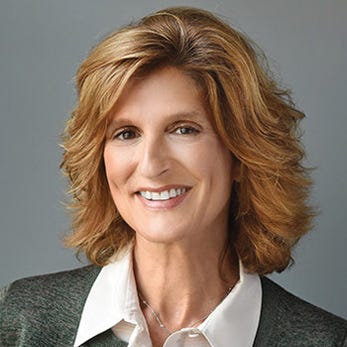A Goldman Sachs Play in the Custody GameA Goldman Sachs Play in the Custody Game
It looks like the firm is preparing to go 'all in' on the RIA custody business.

Recent moves by the firm indicate that something is brewing—and the stars are pointing in the direction of independence.
When it comes to competitive recruiting, Goldman Sachs has long stood steadfastly outside of the playing field. Loath to pay aggressive transition deals, the firm focused instead on recruiting second career advisor talent who grew into experienced private wealth advisors (PWAs).
It’s surely been a winning formula, as the majority of their 400-plus experienced PWAs are among the most successful in the industry, managing at least a billion in assets and generating tens of millions in annual revenue.
But financial advisors outside of the Goldman fold may finally get their shot at associating with the esteemed brand, as it looks like the firm is preparing to go “all in” on the registered investment advisor custody business.
For example, earlier this year, the firm closed a deal to acquire Folio Financial, a relatively small custodian with approximately $11 billion in assets under advisory for about 450 RIAs. And several publications have speculated about the firm’s interest in using the Folio platform as the basis for serving more RIAs going forward.
Plus, two superstar recruiters from Schwab and Pershing (Richard Lofgren and Bill Dalton, respectively) were recently hired by Goldman—another signal of the firm’s intention to compete in the land grab for RIA assets.
While Goldman’s ultimate intentions are hypothetical at this point, it’s worth looking at what this could mean for the industry at large and financial advisors specifically.
A Win for the Independent Space
The mere speculation of Goldman getting into the RIA custody game signals further validation of the independent space. And the growth of independence appears unstoppable. It seems like almost every week we read about yet another multi-billion-dollar team crossing the transom from employee to business owner. Echelon Partners, an investment bank focused on the wealth management industry, reported that just in the third quarter of this year alone, there were 157 breakaways—up 24% from the second quarter, the highest level of activity since the fourth quarter of last year. Adding to the movement is a burgeoning ecosystem designed to support breakaway advisors—with new service partners entering the landscape regularly, including capital sources, technology firms, infrastructure support providers, investment managers and other practice management services.
Yet, trends and validation aside, many top advisors are deterred from going independent because of concerns that their high-net-worth clients would not embrace anything but a well-known and distinguished brand such as Goldman Sachs. But, the ability to leverage the Goldman name, synonymous with the HNW space, could be a real game-changer in assuaging their worries.
What’s the Attraction?
When it comes to payouts, Goldman is notorious for offering the lowest on the Street. So, what makes their private wealth advisors stay put? Undoubtedly, it’s the cachet that the name conveys and the community of top advisors it employs. But of late, we’ve seen more PWAs leave Goldman for greener pastures than ever before—changing jerseys for the likes of Morgan Stanley, UBS, First Republic and the independent space. These folks frequently cite frustrations with limitations in investment flexibility and a substandard retire-in-place program.
Yet, what worries them most is that the firm is taking the brand downstream. That is, becoming “more retail.” The acquisition of $25 billion RIA United Capital Advisors in late 2019, coupled with the idea of broadening the pool of talent leveraging the Goldman name, makes the brand feel less exclusive—diminishing the allure that keeps most PWAs in their seats.
And it’s hard to imagine that an RIA custodian would only open its doors only to the UHNW set. So, will Goldman PWAs, who hold themselves out as the industry’s elite, find themselves standing shoulder to shoulder with advisors who serve the mass affluent?
The Devil’s in the Details
Perhaps the biggest driver toward the RIA space is the ability to leverage best-in-class technology and platforms on a completely open architecture basis. That is, to shop for everything from alternative investments to lending, insurance, structured products, trusts and anything in between. So, what will be a threshold question for advisors who might consider a Goldman custody option is whether they will be limited to the use of Goldman’s technology and platform—because any limitations on the creation of an optimal client experience and foundation for growth run counter to the ideology of independence.
And, finally, Goldman’s foray into the RIA custody space raises questions about whether their biggest competitors will follow suit. That is certainly anyone’s guess. But up until now, the leaders of these firms have all dismissed advisor attrition to independence with little more than a shrug and have shown almost no interest in moving to a multichannel model like Wells Fargo, Raymond James and Ameriprise (with the option to associate as a W-2 employee or 1099 business owner). In fact, Morgan’s recent acquisition of E-Trade made us all wonder if the goal was to become a player in the RIA space, but James Gorman, Morgan’s CEO, has repeatedly insisted that the reason for the acquisition was to further bolster wealth management and capture downstream wealth opportunities from E-Trade’s massive retirement plan business—not to enter the RIA custody space.
Although Goldman has made no formal announcements of a custody play and no launch date has been set, the reality is that it appears as if the stars are aligning as such. Until we hear further, one thing is certain: The independent space is getting more and more exciting each and every day and is worthy of exploration. You may be surprised at what you find.
Mindy Diamond is president and CEO of Diamond Consultants in Morristown, N.J., a nationally recognized boutique search and consulting firm in the financial services industry.
About the Author
You May Also Like







